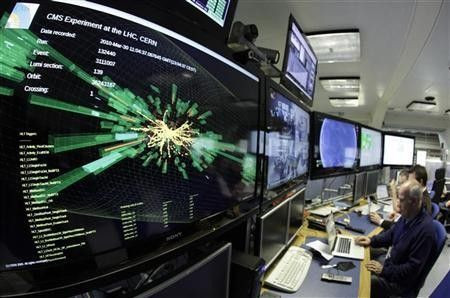Exclusive: Scientists on Why Finding 'God Particle' Higgs Boson is Important

Scientists said Tuesday they may have caught a glimpse of the missing God Particle, the Higgs boson, which is a subatomic particle believed to have been responsible for giving mass to all particles in the universe after the Big Bang.
The excitement was clearly visible among scientists around the world.
Today is indeed the day that we communicate the results of our search for the Higgs boson at the Large Hadron Collider in CERN of the past two years. The general conclusion is that we can exclude the existence of the Higgs boson in a large range of possible masses, but that a small window remains where we cannot confirm nor exclude the existence of the Higgs boson, Dr. Pierre Van Mechelen from the University of Antwerp, Belgium, told IB Times.
We do have a number of candidate events, but these may equally well be explained by background events mimicking a Higgs signature, Van Mechelen, who is involved in the study of proton-proton collisions with the CMS detector at the LHC at CERN in Switzerland, said in an email message.
The discovery of the Higgs is important because our present Standard Model of particle physics would be inconsistent without it. Not only would we not have any explanation for why particles have mass, but the theory would also predict that some processes at high collision energy would occur with a probability larger than 100 percent, which is clearly nonsensical, Van Mechelen added.
If the Higgs boson would not exist, it would mean that the simplest possible solution for the problems of the Standard Model as proposed by Peter Higgs is not correct, he said. This would actually be a quite interesting development as we then need to look into more elaborate theories in particle physics, which may even have stronger implications for cosmology (for example, by proposing particles that can explain the dark matter problem).
According to Dr. Alan Barr from the Oxford University, the Higgs boson is a crucial part of the machinery of the subatomic world. He says the discovery of the Higgs boson would demonstrate that the mathematically beautiful theory of the subatomic world we are testing is more than just an elegant model and that it does, in fact, describe the universe around us.
Dr. Mrinal Dasgupta from the University of Manchester, UK, said a standard model without the Higgs would face significant problems and one would have to go back to the drawing board to construct a theory that evades the Higgs issue and is consistent with all the data.
The Higgs boson is the only missing piece in what is called the Standard Model of physics, which is the current theory of elementary particles and all fundamental interactions except gravity. The Standard Model has been tested against experimental data from particle colliders and has stood up extremely well to all such tests. It is the most fundamental theory we have today but assumes the existence of a Higgs particle that gives other force-carrying particles (already discovered and studied) such as the W and the Z their mass, Dasgupta said in an email message.
... The existence of the Higgs is critical to the success of the Standard Model as it stands. The existence of a Higgs at a mass 125 times the proton mass (which is what we may see) also allows for new theories (extensions of the Standard Model and perhaps steps on the way to a Grand Unified Theory including gravity) like supersymmetry to be viable and this has also gotten people excited, he added.
However, Dr. Ananthanarayan of the Indian Institute of Science, Bangalore, India, says there is still a lot of work to be done. Since there are enormous backgrounds to the detection, it takes a lot of analysis to definitively say whether or not the particle has actually been produced, or is it a fake signal that appears like a Higgs. A convincing result will take much more data and analysis, so that a definite signal above the noise can be established once and for all, Dr. Ananthanarayan said.
If there is no Higgs here and these indications prove to be unsubstantiated, then it would mean that physicists have to go back to the drawing board and ask why all the data that is consistent with the Higgs mechanism (and indirect signals feeding back into precision fits to electroweak data consistent with a Higgs in the region of more than a 100 GeV are so successful) is actually consistent? There are several proposals on the table, many of which need to be challenged and made more predictive or falsifiable, he added.
© Copyright IBTimes 2024. All rights reserved.





















